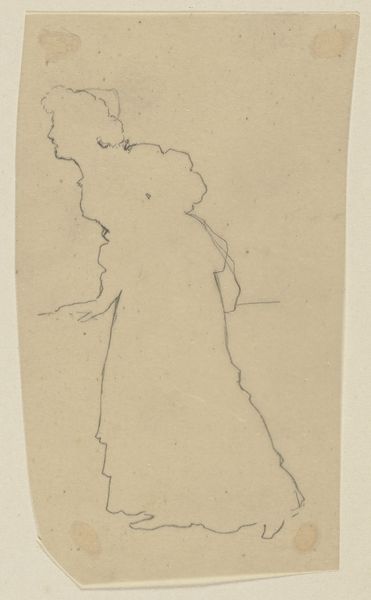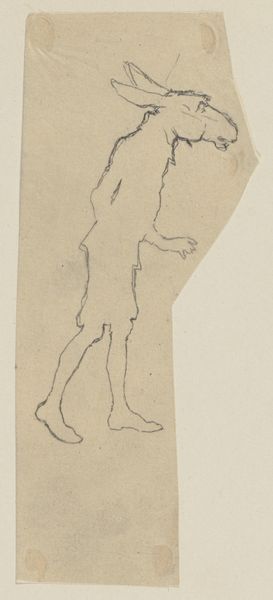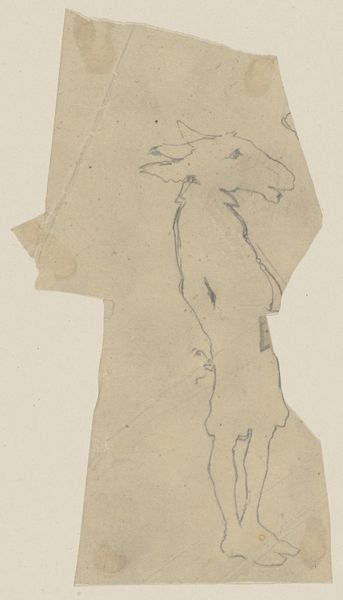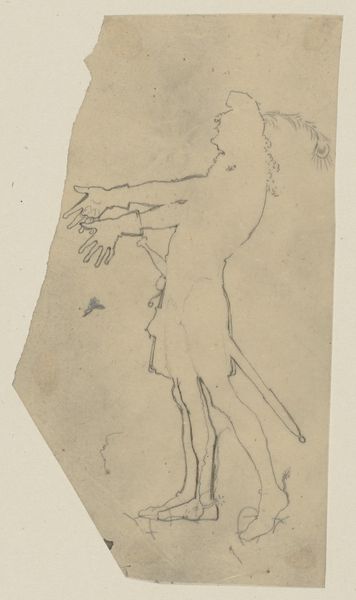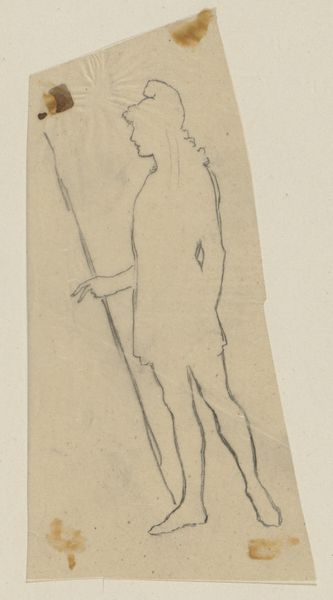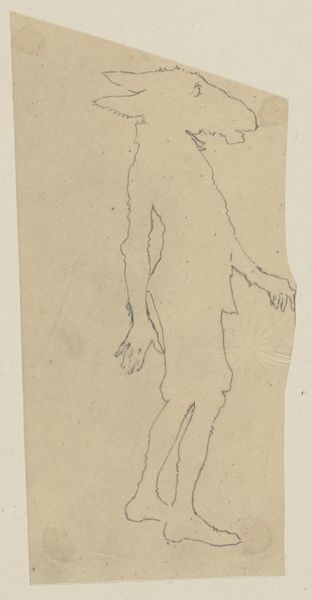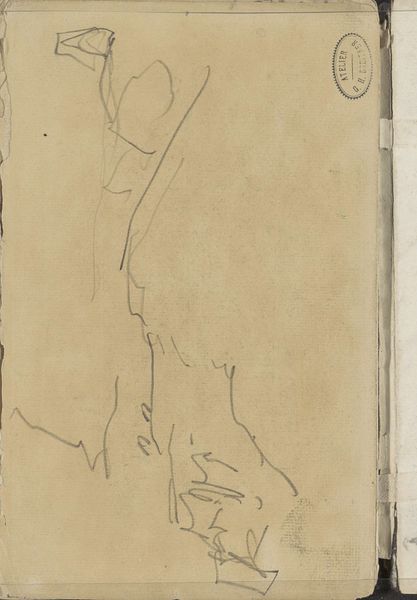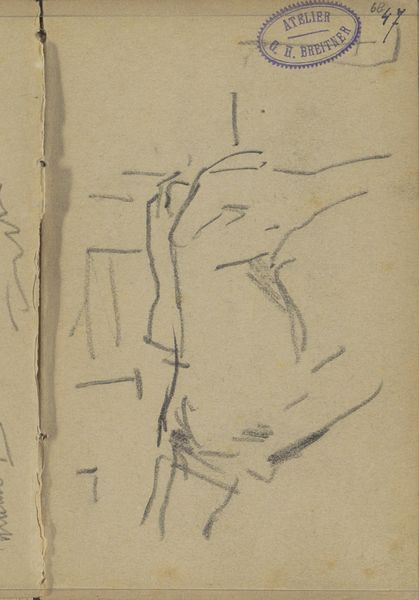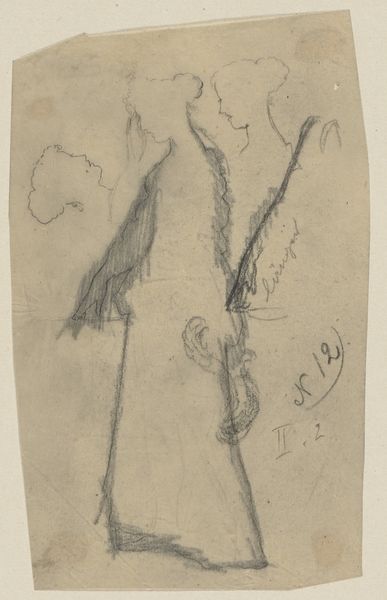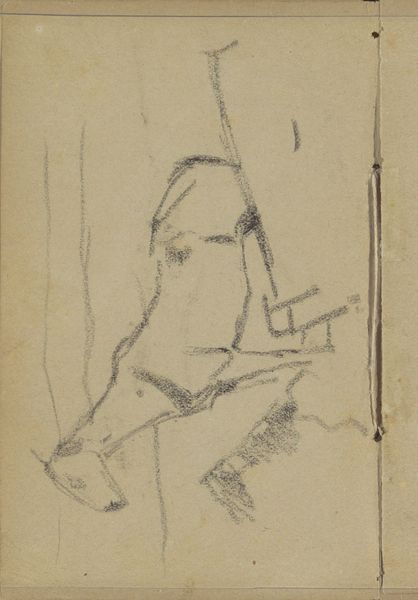
Nick Bottom mit Eselskopf, gehend, einen Arm nach vorn gestreckt c. 1867 - 1868
0:00
0:00
Copyright: Public Domain
Curator: Immediately, I'm struck by a sense of disorientation and mockery. The elongated, almost skeletal figure outlined here seems simultaneously pitiful and grotesque. Editor: Today, we’re examining Paul Konewka’s "Nick Bottom mit Eselskopf, gehend, einen Arm nach vorn gestreckt," a pencil drawing from around 1867-1868, now housed in the Städel Museum. This work, with its roots in Romanticism, grapples with the multifaceted aspects of human-animal transformation. Curator: Transformation... I see it representing the often-absurd ways power and class can literally make one into a beast. Bottom's transformation can be seen as society’s commentary of people in a system stripping individuals of their inherent dignity and autonomy, reflecting themes of otherness, marginalization, and social alienation, if you will. Editor: That's fascinating. The donkey's head is indeed a potent symbol. Historically, the donkey has represented stubbornness, foolishness, but also labor and humility. Perhaps Konewka uses it to explore the burden of physical labor and its associated dehumanization, a very current concept back then, reflecting the societal expectations on certain groups. The fact that only the contours are there also says much about liminality: we see Nick transitioning into his asinine form, losing one essence in order to get another, both of them constrained to predetermined categories. Curator: I agree; it’s precisely in this unfinished state, this ambiguity, where the artwork generates tension. He becomes an allegory for how societal roles, class divisions, and forced identity changes impact self-perception, or more to the point, its loss. This figure transcends simple depiction and acts as a critique. Editor: Konewka seems to capture a moment of existential questioning within Bottom himself. It reminds me of ancient myths where animals were symbols of the human psyche’s dark or suppressed urges. It's as if the visible outline is asking us, "Where does humanity end and the beast begin?" Curator: An essential question about boundaries and constructs in social identity. This journey with the artwork reaffirms my belief that art can foster dialogue and incite deeper questions on issues surrounding the interplay of identity and oppressive social structures. Editor: Absolutely! Looking at the symbology involved made me remember our long association with nature in creating these metaphors about ourselves. Perhaps reflecting about that history and heritage may help to create more empathetic frameworks around identity and society.
Comments
No comments
Be the first to comment and join the conversation on the ultimate creative platform.
